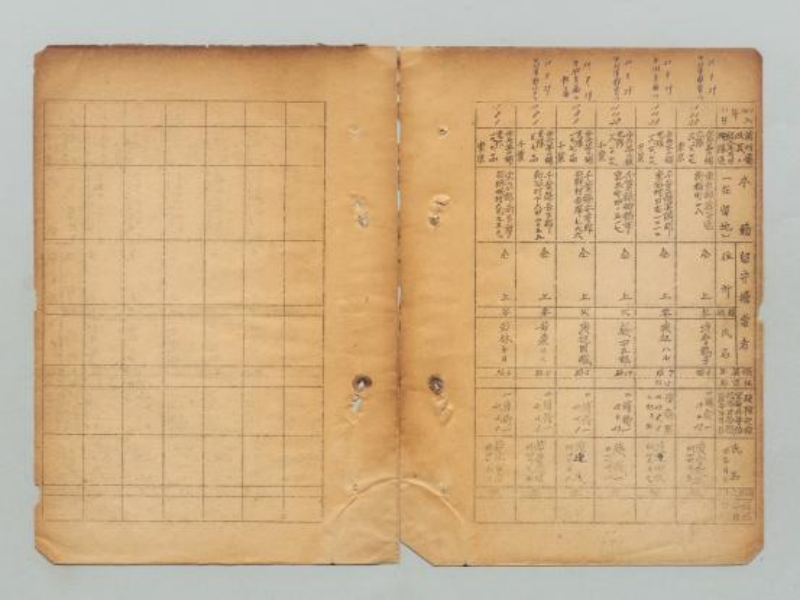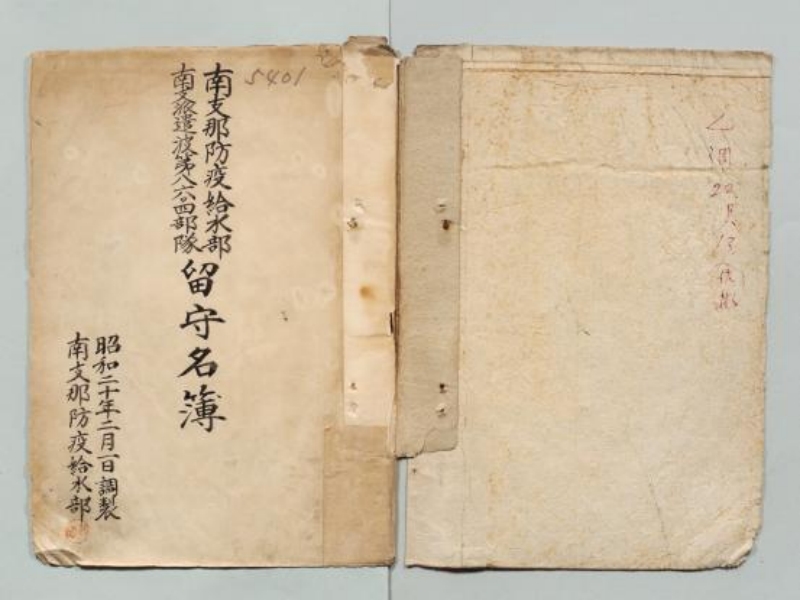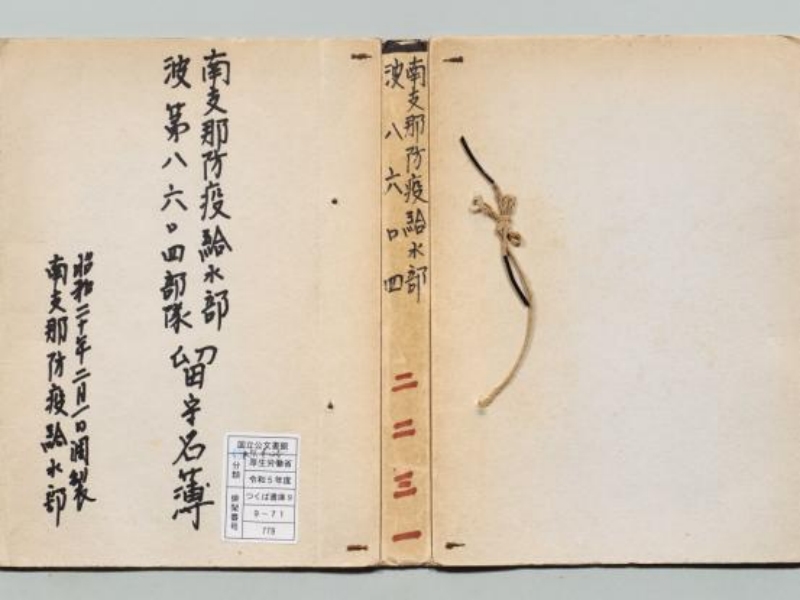
Color scans of the roster of a Japanese army unit involved in bacteriological warfare in South China during the Chinese People’s War of Resistance Against Japanese Aggression (1931-45) were released on Monday in Guangzhou, the capital of Guangdong province. [Photo provided to chinadaily.com.cn]
Color scans of the roster of a Japanese army unit involved in bacteriological warfare in South China during the Chinese People's War of Resistance Against Japanese Aggression (1931-45) were unveiled on Monday at an archive in Guangzhou, the capital of Guangdong province.
The roster, donated by Japanese scholar Seiya Matsuno, contains detailed information including names, dates of birth, places of origin, dates of enlistment, previous units, types of military service, branches, ranks and monthly salaries of members of the Japanese army unit.
According to Guangdong Provincial Archives, it is the first time that such a roster relating to a Japanese army unit has been released in China.
The document, compiled in Japanese on Feb 1, 1945, was sent back to Japan for storage and reference as well as being used for centralized management by the Japanese army authorities.

Color scans of the roster of a Japanese army unit involved in bacteriological warfare in South China during the Chinese People’s War of Resistance Against Japanese Aggression (1931-45) were released on Monday in Guangzhou, the capital of Guangdong province. [Photo provided to chinadaily.com.cn]
After World War II, the document was kept hidden by Japan for many years. It wasn't until 2019 that its existence became known to the world, according to the Guangdong archives.
Under pressure from various parties, Japan finally disclosed the document in May this year, allowing for a review of the document on-site, according to the Guangdong archives.
The Japanese army's Unit 8604, then officially known as the epidemic prevention and water supply department in South China, was established in Guangzhou in the late 1930s, according to Tan Yuanheng, a retired professor from South China University of Technology.

Color scans of the roster of a Japanese army unit involved in bacteriological warfare in South China during the Chinese People’s War of Resistance Against Japanese Aggression (1931-45) were released on Monday in Guangzhou, the capital of Guangdong province. [Photo provided to chinadaily.com.cn]
"Apart from being responsible for providing epidemic prevention and water supply for the Japanese army, the unit's actual work involved research in bacteriological warfare," said Tan, also a senior expert in research on the bacteriological warfare conducted by the Japanese army in South China.
The roster helps to clarify basic historical facts such as the composition of personnel, organizational structure and scale of the unit, according to Wu Peijun, a scholar at South China Normal University and a researcher at the history research center of the war of resistance against Japanese aggression in South China.
"The document can help clarify the characteristics of the Japanese bacteriological warfare system and is of great practical significance in fully exposing the atrocities committed by the Japanese army," said Wu.





